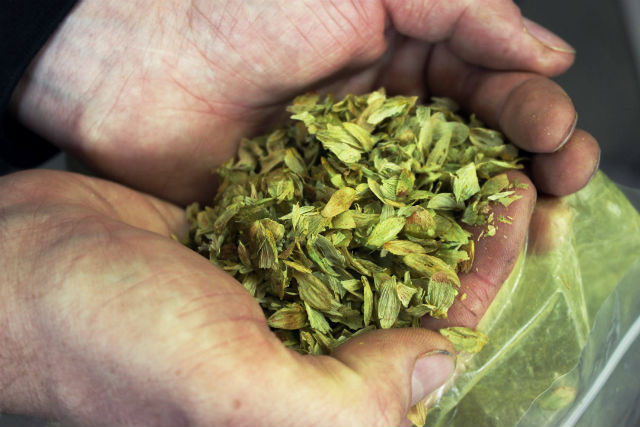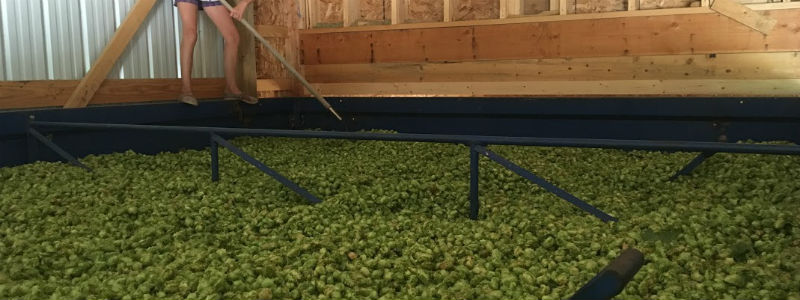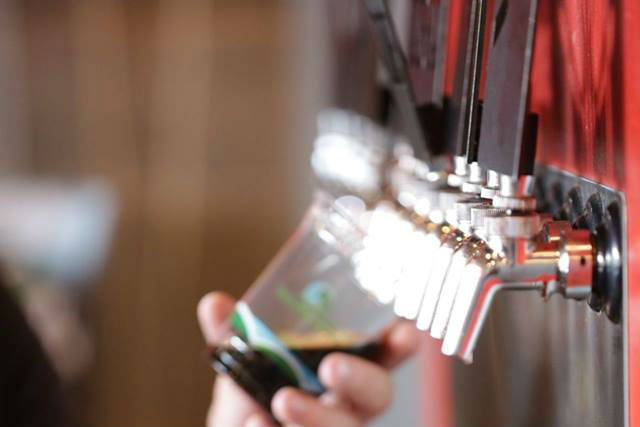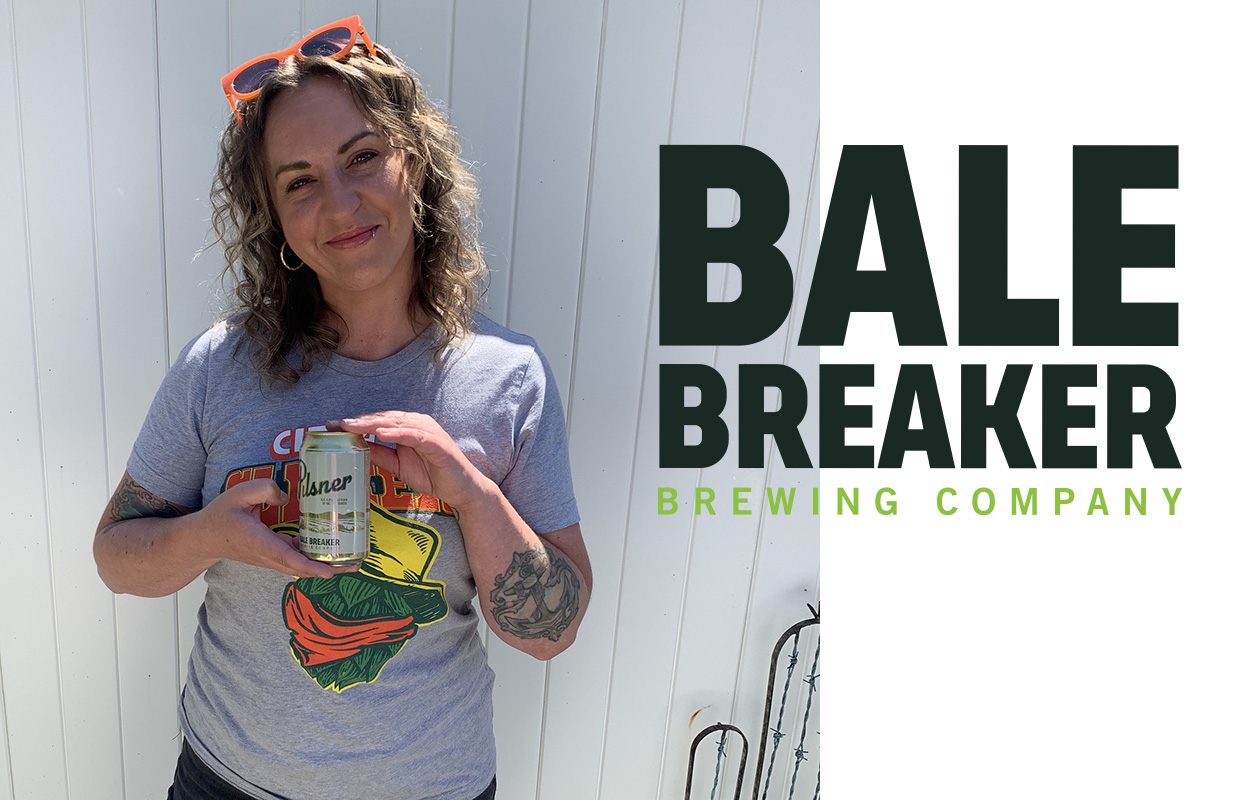
On Monday, we spoke with brewers about what they are doing to get the most out of their latest hop harvest and planning for the future with what is being grown now.
But once you get the hops in-house, testing them and fully understanding the properties can go a long way in improving and adapting current recipes along with ideas for future projects.
The body of knowledge on the science of hops is immense and growing faster than ever, noted Nate Swan of Rahr & Sons Brewing.
“There are many factors that influence the amount and quality of flavor and aroma these plants can impart in a beer,” he said. “We have experimented with different infusion techniques, temperatures, contact times, re-circulation, and even different formats for the same hop variety … all yielding various flavor and aroma combinations.
“There are also some interesting chemical reactions that occur when yeast is present at the time of dry hopping, creating another variable and opportunity to create more and different hop flavors in beer. There are almost endless possibilities when deciding how and which hops you will add, and at what stage in the brewing process.”
The Texas brewery has used some new experimental varieties in “one-off” and small format beers, which have ended up being part of the hops profile of some of their core lineup beers.
“We are definitely willing to try new varieties,” Swan pointed out. “Using one hop at a time in a particular beer is a great way to taste and smell what qualities it imparts.”
Scott Pyatt, the COO for Catawba Brewing said they do rely on their suppliers for key specifications like bitterness content, flavor profile, and efficiency.
“Our vendors allow us inside their secrets to talk about upcoming varieties and/or innovative uses,” he said. “At our relatively modest size, we cannot devote a scientist to hops. Our suppliers are truly our partners in this area.”
Pyatt did point out that once we get the hops in-house they do put them through the analytical wringer.
“We have bitterness and other characteristics tested in commercial labs, and we measure turbidity and the like,” he said. “But we also put every new creation through a battery of sensory analysis. We’re lucky — we have staff members across our company with very good flavor recognition capabilities. And we have key focus groups of consumers who help us there as well.
“We have to understand if what we’re creating hits our targets.”
Wormtown Head Brewer, Scott Drake added to look over the hop analysis before utilizing in the brewhouse and cellar.
“Research conducted behind specific hop oils reacting to heat, bio-transformation, and cold side temperature ranges shed light on their functionality,” he said. “Keep things simple regarding the recipe but strive for complexity in the finished product.
“To achieve this compare the composition of new varieties with hops you are familiar with. You will have rough idea of how it will work in the beer. Use the data to influence your recipe but rely on your tastes buds.”
Although it isn’t the most scientific approach, two of the most important things you can do is talk to other brewers, Swan noted.
“[Have them talk] about their experiences and results with experimentation, and most importantly tasting and comparing the results of different methods, ideally changing only one variable at a time,” he said.
Photo credits: Maxline Brewing & Hire Wire Hops




1 Trackback / Pingback